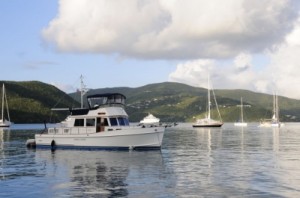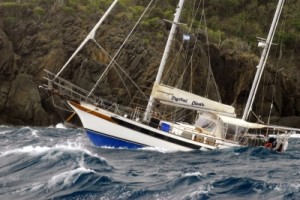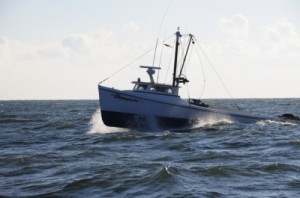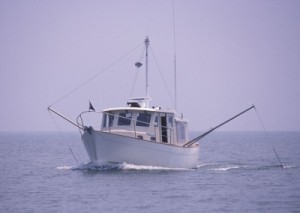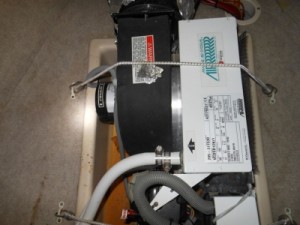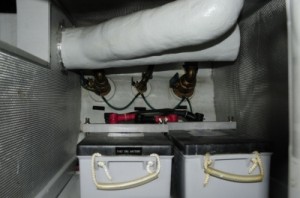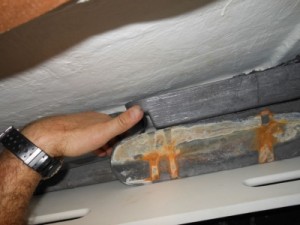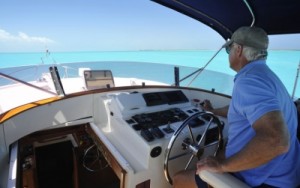Seaworthy, Reliable, and Safe
Text and photos by Steve D’Antonio
Copyright © 2012 Steve D’Antonio Marine Consulting, Inc.
Whether it is a far-off destination or your favorite anchorage close to your home port, the design, engineering and installation of the vessel and its systems, and proper maintenance and the upkeep thereof, are all items which require careful attention to detail.
Greater than the Sum of its Parts
Seaworthy, reliable and safe; it’s an ethos I learned nearly three decades ago, while sailing aboard the research vessel Westward, on a fall passage between Woods Hole, Massachusetts and the Caribbean’s Windward Islands. She was a simple but stout ship, a 120 foot steel schooner built by the legendary firm Abeking and Rasmussen, in Germany in 1961. Her engineering spaces had a rugged, commercial feel about them. All of her systems were fastidiously maintained; everything had a purpose and everything had its place. The result was few breakdowns and no systems-related emergencies during my time aboard. For seagoing vessels, my goal is to ensure that systems failures, and especially systems-related emergencies, are something with which you assist other vessels and crews.
In tumultuous conditions, including and especially when inshore, failure of a critical system such as steering or propulsion can quickly place a vessel in extremis.
In the ensuing years, I’ve honed and refined this concept into a mantra that I routinely recite in the boat build and systems consulting world, as well as in the writing and lecture projects I undertake. There’s more to it, however, than you might think. Taken piecemeal, their significance, while important, has an entirely different meaning than when taken as a whole. The definition of seaworthy is plain enough: worthy of the sea, fit for a voyage at sea, able to go to sea and, importantly, return to port. “Reliable” is also plain enough, and in this context it means that a system or component can be relied upon to perform as one would expect without premature failure (the definition of “premature” has a significance all its own). Vessels and their systems must, of course, be properly maintained in order to remain reliable.
Chesapeake Bay-built deadrise fishing boats fish year round, in what can be notoriously short-period, steep seas. These vessels, and the seamanship capabilities of those who crew them, have evolved over many years to endure these conditions.
Defining “safe”, on the other hand can be very difficult indeed. Going to sea is inherently unsafe, certainly less safe than staying home and watching TV while lying on your couch. As seafarers, however, we know that going to sea either affords us an experience that brings us pleasure, or it’s a means of earning a living and thus we forfeit some degree of safety to pursue one or both of these goals (most professionals who go to sea also enjoy being there, eschewing the safety and comforts of shore, including me). Thus, it would be an understatement to define safety as relative; it’s highly dependent upon your outlook. A vexation of mine involves frequent discussions about safety (at or when preparing to go to sea) because I’m a firm believer that, on its own, in the maritime world, the term is highly over-used, yet nearly always undefined. I don’t believe safety can be discussed or considered in a vacuum, without taking into account a variety of other factors.
If, on the other hand, these terms are taken as a whole, assuming for a moment they are a single word that can’t be separated without becoming unintelligible, the definition for “seaworthy-reliable-safe” takes on a new meaning. In short, I believe ensuring that if a vessel is designed and built to be seaworthy, and its systems are designed and installed in a manner that ensures reliability, the result affords the user the option for safe operation of that vessel. While the three terms carry some degree of validity on their own, together, as a whole, the result is greater than the sum of their parts.
This 30-foot production trawler proved its seaworthy design in a round trip passage, made by the author and three colleagues, between the Chesapeake Bay and Bermuda. Her designer, Bill Garden, is well known for drawing capable, go-anywhere vessels. Before she set off on this passage, however, her systems were reviewed and substantially modified to suit the journey and the anticipated conditions
Is Your Vessel Ready to go to Sea?
I recently read a story about a fishing vessel washed out to sea during the devastating tsunami in Japan. Recently, a year later, it was sighted not far from the Queen Charlotte Islands, in British Columbia, Canada. Clearly, this vessel has some element of seaworthiness that any mariner can appreciate and envy. Her hull is streaked with rust, however, she appeared to be floating on her lines. While there’s no telling what condition her cabins or engineering spaces are in, she is undeniably seaworthy enough to have crossed the vast Pacific Ocean crewless, without the benefit of propulsion or electricity – an impressive technical feat for any vessel. It makes one wonder how many supposed blue water, offshore-capable vessels, power or sail, would be capable of completing such an improbable journey?
Much like safety, the term seaworthy is also relative, as it must be taken in context with the vessel’s intended use. If the vessel is billed as being a ‘blue water passage maker’ by her builder or seller (or if that’s how you intend to use her; 19-foot open boats have circumnavigated, after all), then she must be designed and built for the application. If, on the other hand, ‘inshore passage making’ is her specialty, the standard should be adjusted accordingly. Remember however, even inshore vessels must be seaworthy. (Some of the most tumultuous conditions I’ve ever encountered were on a passage across the Bras d’Or Lakes.)
I recently inspected a 35 foot recreational trawler that was equipped with an air conditioning unit located under the V berth, whose sole means of security, other than the wires and hoses attached to it, was elastic bungee cords. I was easily able to raise the unit several inches by hand and shuddered at the thought of what it would do when the vessel encountered a steep, short-period head sea. Clearly, this is a less than seaworthy system for virtually any vessel, even those operating in sheltered waters.
This self-contained air conditioning unit weighs 56 pounds and is installed relying solely on 1/4″ bungee cord. One can only imaging the chaos that would result if the unit were to break free while under way.
Take a Close Look
With the revised definition for “seaworthy-reliable-safe” in mind, take a fresh look at your vessel, or the vessel you intend to purchase or the plans for the one you intend to build. Are her scantlings, the dimensions of the vessel’s structural members, hull, keel, stringers etc, up to the task; are they stout enough for the conditions you believe you might encounter? If you aren’t certain, call in the services of an expert to evaluate the design, preferably a naval architect experienced with vessels of this ilk. Review the systems: Are they rugged and installed in a manner that ensures reliability and ease of access/service? Again, if you aren’t sure, seek the input from those who are knowledgeable on the subject. Systems design and installation is an art form. Any reasonably competent technician can install wiring, pumps and other gear, using whatever real estate is available. Systems installations should, however, follow a design: a clear path that takes into account, among other things, severity of use and frequency of necessary access. Seacocks, for instance, need excellent access at any time; they must never be obstructed, while a bow or stern thruster only needs access for periodic inspections and service.
While it’s not comfortable to reach over the batteries to access these at-the-waterline seacocks, they are easy to view and inspect. Seacocks should be exercised periodically to ensure they will operate properly when necessary, which means they must be accessible.
I have two over arching pet peeves in the vessel inspections I conduct. One, access to critical gear that is poor, like the aforementioned seacocks and two, installation of gear in a manner that does not use the space wisely. I recently inspected a new vessel, wherein two large hydraulic autopilot pumps had been installed on the sole, in the middle of a large chunk of prime space in the lazarette. This not only occupied valuable foot room for inspection and service work, it subjected the pumps to unnecessary potential traffic and damage. The pumps could have easily been installed around the perimeter of this space with just slightly more effort on the part of the installer. Again, systems installations should never be haphazard and location often not left up to individual installers; they must follow a logical plan that balances utilization of space with ease of access.
It’s a common occurrence, lead ballast simply dropped into bilges or lockers, relying on gravity alone to keep it in place. Ballast should always be cribbed or otherwise secured in place to prevent any movement aboard any vessel. For blue water power vessels, this includes being heeled on their beam ends and for offshore sailing vessels, when inverted.
Remember “seaworthy-reliable-safe”; individually these terms are important, however, as a whole they are an ethos worth embracing and one that will undeniably pay dividends whenever your vessel leaves the dock.
The story concerning the “ghost” fishing vessel can be viewed at:
http://www.cnn.com/2012/03/23/world/americas/canada-trawler-adrift/index.html?eref=mrss_igoogle_cnn
Seaworthy-reliable-safe; A breakdown or systems malfunction on a day even as idyllic as this can have serious consequences. Prepare for for the worst and operate your vessel secure in the knowledge that you are ready for nearly anything the sea may serve up.
For more information on the services provided by Steve D’Antonio Marine Consulting, Inc. please e mail Steve at info@stevedmarineconsulting.com
or call 804-776-0981


